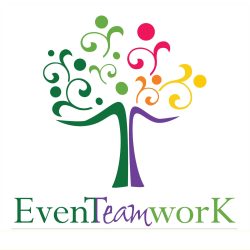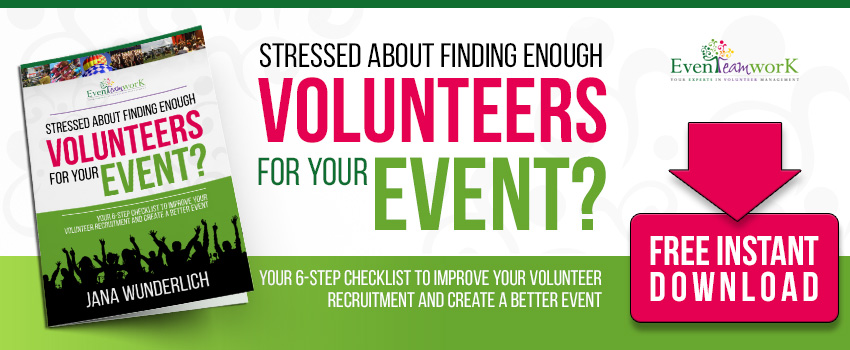I lost count of how many times recruiting volunteers has been pointed out to be a challenge for event organisers. Not having enough volunteers, not having the “right” volunteers and volunteers not showing up are commonly reported problems.
This is supported by many articles stating that often there are not enough resources put into volunteer recruitment to ensure we have enough and the right people supporting the organisation. As a result event organisers wear themselves out recruiting double the amount of volunteers.
Simple math isn’t it? We need more volunteers to cover the ‘no shows’ so let’s recruit more! When looking closer though we often observe exhausted and frustrated event organisers who still end up short-staffed.
Yes, more investments are required for managing volunteers. However, simply putting more resources into the recruitment without considering the bigger picture is in fact a waste of your resources. Solely focusing on recruitment is commonly considered the solution and it just seems the most obvious one. However it is a short-term fix that doesn’t actually solve the problem, which means it will be re-occurring at the next event.
A different approach
We need to acknowledge that recruiting and retaining volunteers for events goes beyond rustling up some people to help out for a day. We need to stop seeing volunteers as a commodity. It carries the assumption that there are people just on stand by to help at any given event.
With recruitment being the most tangible task in volunteer management, organisations consistently spent time and money on advertising and call outs to fill positions.
While this is absolutely needed to make people aware these opportunities exist, I believe a more holistic approach with a long-term solution rather than a short-term fix is required.
This means any organisation can save resources down the track by investing in a positive sustainable outcome rather than solely into filling the next position. Recruitment is part of the solution but not the sole focus.
Essentially, if retention rates and show up rates are consistently low, this is not a recruitment problem and usually cannot be solved by just recruiting more people. It usually indicates one or more of the following three problems.
Culture
A culture that acknowledges the contribution volunteers make and communicates what makes your event unique and how volunteers are part of it will be attractive to potential volunteers and it will also ensure volunteers stay engaged. A less supportive organisational culture can significantly increase your recruitment needs and thus your costs.
Culture is one of the determining factors to retain employees, not to mention volunteers. With more and more choices available, culture will be a competitive advantage in terms of retaining people in the organisation.
Visibility
You might have a great organisation with a great cause or providing a great service, but your market doesn’t know about it.
Being visible will attract customers, sponsors, staff, volunteers – in short your event community. You may need to raise the profile of your organisation or event to attract your community. Volunteers are part of your audience, so building your audience is half the battle.
Clearly defined roles
Could your volunteer roles be too vague or too restrictive? If the role is unclear people may be cautious to sign up.
Make sure the volunteer roles you are recruiting for are clear from the outset. This way you can manage expectations and ensure the people who register are already committed to some degree. Being too vague may get you a lot of registrations but no commitment. Being too restrictive on the other hand may mean you lose out on some great candidates.
If your organisation struggles with any of these problems, purely spending more time and money on recruitment, will not be an efficient use of your resources.
In this case a more holistic approach will be more efficient and effective to achieve your desired outcome of recruiting more volunteers. This includes investing in the volunteer management strategy & planning rather than just investing in recruitment and implementation.
A volunteer program strategy will integrate into the organisational strategy and address the points above, so that you can implement an effective volunteer program.
We have put together a 6-Step Checklist that will help you create a more effective volunteer program step by step. You will avoid all the above mistakes and save time and money while achieving better results. CLICK HERE for FREE download.





